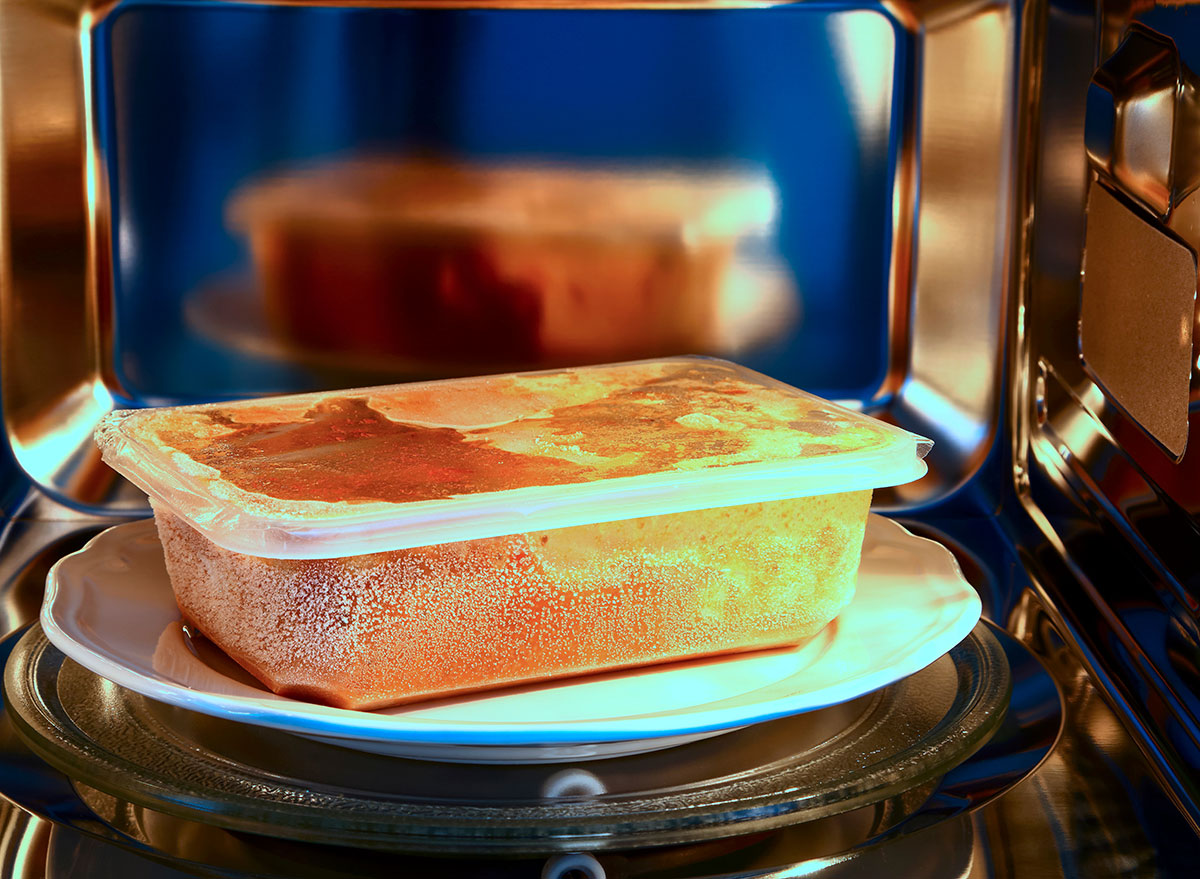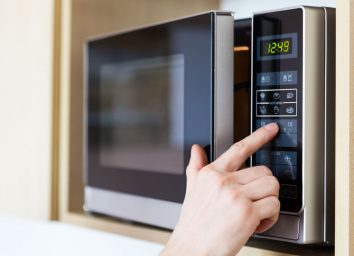One Major Side Effect of Reheating Frozen Foods, Says Science

Let’s be real, we all want to be the person who makes elegant home-cooked meals every night, serving our families dinner that we’ve meticulously crafted in our well-organized kitchens—but very few people have the time to make that dream a reality. Most of the time, it’s way easier to just toss a frozen meal in the microwave.
Whether it’s a prepackaged meal from the grocery store or something you made…a while ago that’s ready to heat up, reheating frozen food in the microwave is a simple and fast way to put a meal together, but it could also be dangerous as heating frozen food up in a microwave can lead to you ingesting bacteria that are still living in the cold spots of the food.
Anyone who has ever used a microwave has probably noticed that some bites of your reheated food will be scalding hot while others will be lukewarm. That’s because microwaves, while effective at heating foods up quickly, don’t cook them evenly. That can be a shame as sometimes your meal will have varying temperatures depending upon where you dig into first, but it can also pose a problem as the uneven cooking does not effectively get rid of any bacteria that may be in the food.
In addition to cold spots, it has been reported that microwaves also don’t heat up frozen food as well as other heating methods. This is because water molecules found in frozen food are immobilized by ice crystals, which doesn’t allow the heat to distribute through the food effectively.
A study from Michigan State University said that even microwaves that include turntables may not properly heat up the food, and bacteria may continue to live in the frozen food after it is reheated in the microwave.
Consuming bacteria can lead to food poisoning, which typically results in nausea, vomiting, fever and diarrhea.
To help avoid the bacteria from living in the cold spots of food, Clemson University’s Home & Garden Information Center recommends stirring or rotating food “midway through the cooking,” and turning large items upside down to “prevent cold spots where harmful bacteria can survive.”
The U.S. Department of Agriculture also recommends heating food in the microwave “until it reaches at least 165 degrees Fahrenheit” throughout the entirety of the dish, as well as allowing for standing time, which is when the food continues to cook even though the microwave may be off.
Get healthy eating tips straight to your inbox by subscribing to our newsletter, and for more, read these next:








